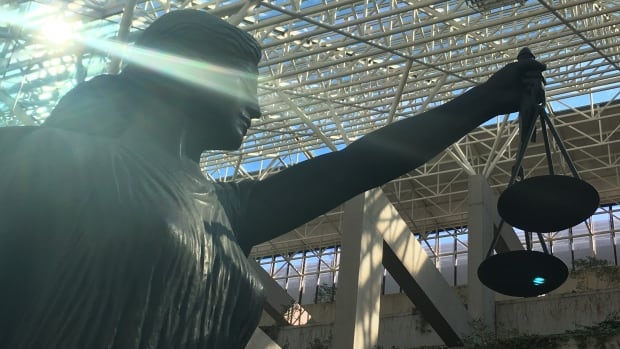A B.C. man who stabbed his wife in the back with a kitchen knife has been found not guilty because he was in a state of automatism — a term describing unconscious, involuntary behaviour.
According to a B.C. Supreme Court ruling, Jean-Luc Charles Perignon stabbed his wife Debra following an Easter Monday dinner at their Sunshine Coast home in April 2017. Perignon claims he was in a state of automatism after consuming alcohol and prescription drugs prior to the attack.
The most likely explanation for Perignon’s actions, the judge ruled, is that they were “entirely involuntary because it occurred while he was effectively asleep.”
According to the ruling, Perignon’s wife opened the front door to their home around 10 p.m. on Easter Monday to let the dog out when she heard her husband’s footsteps.
“She never saw him, nor did she hear him say anything,” the ruling said. “She felt a ‘thump’ in her back and realized she had been stabbed. She reached behind her back for the knife and pulled it out herself, cutting her thumb badly in the process.”
Perignon testified his memories of that night blended into one another. He took an antidepressant, and his usual mix of opioids to treat pain. Ten minutes before going to bed, he took zopiclone, a non-benzodiazepine commonly prescribed for insomnia.
He also had three or four drinks of pastis, an anise-flavoured liqueur, around dinner time.
He remembers taking off his shoes and socks before getting into bed and feeling pain in his back.
“His next memory is standing over his wife while she was lying on the floor in front of him, screaming in pain,” the judgment said. “He remembers seeing the kitchen knife on the floor near her. He was in shock.”
Perignon was charged with one count of aggravated assault.
The ruling said Perignon had been taking opioids for pain following two car accidents as well as a benzodiazepine for insomnia. Guidelines prohibiting the prescription of benzodiazepines together with opioids were put in place in June 2016.
Perignon’s doctor told him he had to quit one or the other and he chose the pain medications, foregoing the benzodiazepine for his insomnia.
He suffered withdrawal, the ruling said, and tried different medications for his insomnia, but to no avail.
In January 2017 he was prescribed zopiclone, a drug that is not in the benzodiazepine family but “is said to have a similar pharmacology,” and poses risk when combined with opioids. It is not recommended that patients take zopiclone more than 10 days in a row, the judgment said.
After Perignon saw no improvement in his sleep, he was switched to another drug, then went back on zopiclone. His doctor “suggested increasing the dosage by half a pill at a time until it began working,” the judgment said.
Automatism as defense rarely succeeds, says judge
A psychiatrist testified that the amount he was taking prior to the attack was “well beyond the recommended range of prescription for this medication.”
As Perignon took zopiclone, he also took a “dangerously high dosage of opioids.”
“[Perignon] was certain to be in a state of impaired mental awareness, and more likely, he was [in] an altered sleep state,” read a report from a psychiatrist.
“More likely than not, he was in a state of complex sleep-related behaviours. As such, Mr. Perignon would not be aware of his actions nor be able to form basic intent.”
In the judgment, Justice Warren Milman said using automatism as a defence rarely succeeds.
“Because the law assumes that, in general, people act voluntarily and are responsible for their actions, Mr. Perignon bears a heavy burden to demonstrate that the ordinary presumption should not apply here,” the judgment says.
Milman later says Perignon “has met his persuasive burden to show that his act was indeed an involuntary one.”
The ruling says Perignon has had no contact with his former wife or their youngest daughter, who still lives with her, since the incident.


